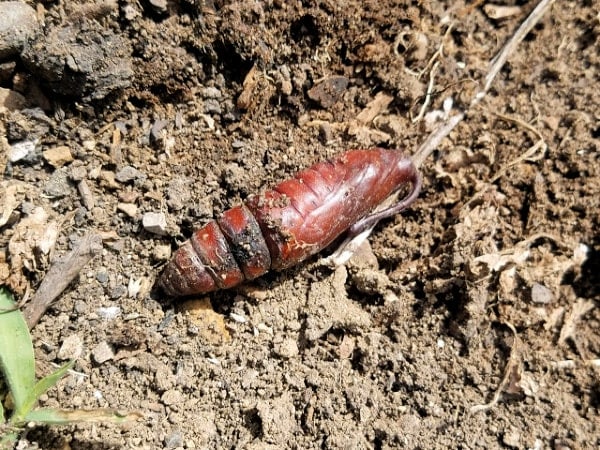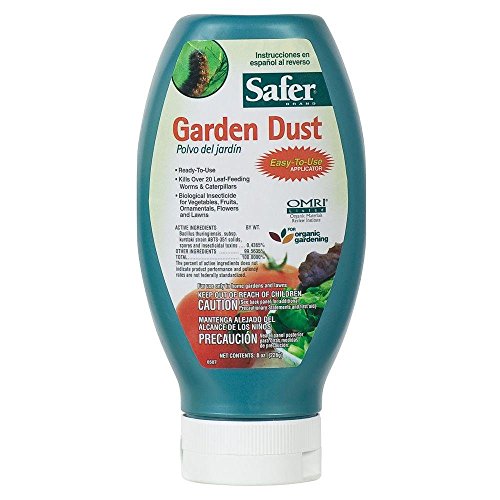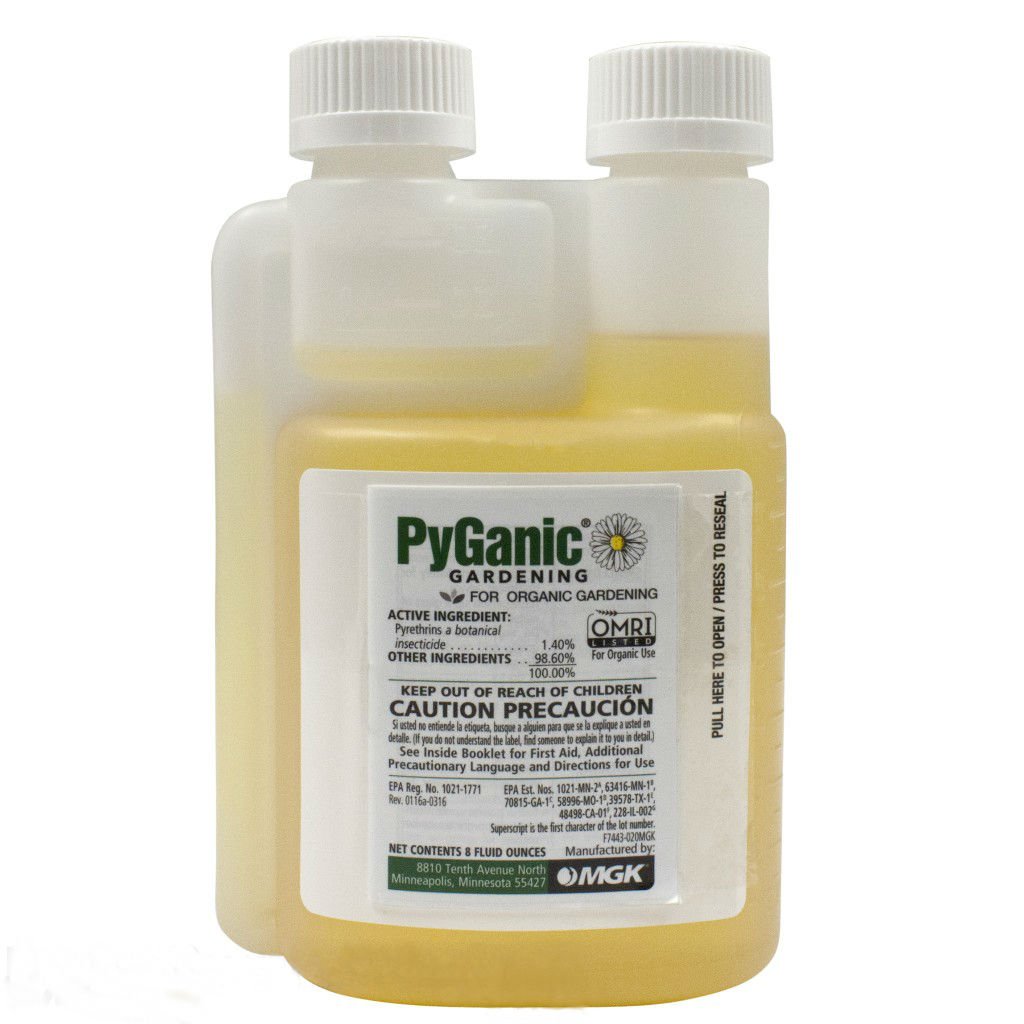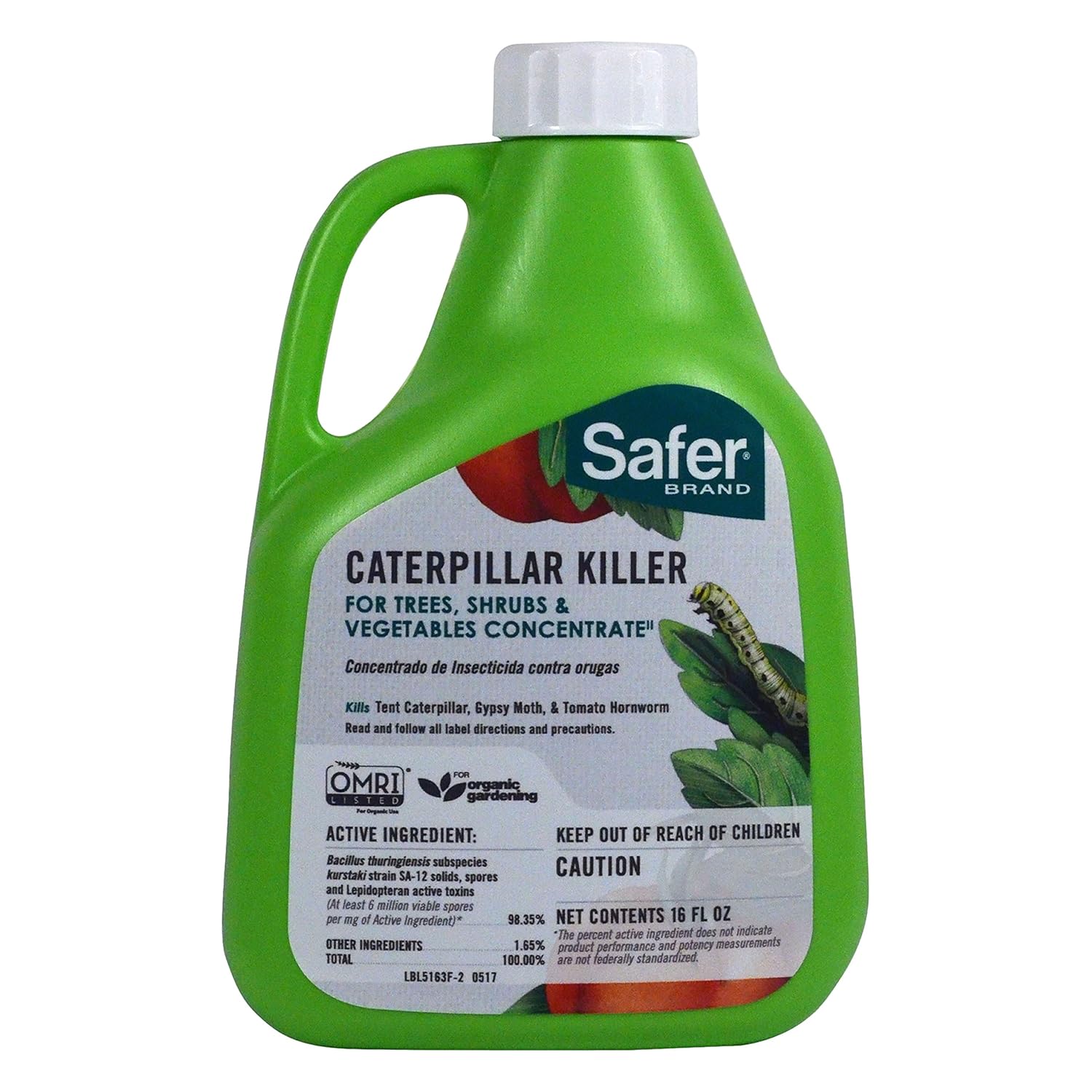How To Get Rid Of Tomato Hornworms
Hidden Springs Homestead may earn a commission for purchases made after clicking links on this page. Learn More.
If you have been vegetable gardening for anytime at all, I am sure you have ran into a huge green tomato hornworm! I really despise these things! And with good reason, they can destroy a tomato crop literally overnight! But don't fear, with strategic planning and some careful management you can naturally control tomato hornworms and even get rid of this horrible garden pest for good!

Tomato Hornworm life Cycle
I feel like before we talk about how to get rid of tomato hornworms, we need to understand how they grow so we know what to look for. I've placed the life cycle in a weird way because normally, our first encounter is the full grown hornworm – at least it was for me when I started gardening.
Where do tomato hornworms come from? The hornworm life cycle is quite fascinating and goes through 4 stages: Eggs, Larvae, Pupae, and Adult.
Larvae Stage
My first encounter was in the larva stage and most likely yours as well. The big fat ugly green worm we see on our tomato plants is actually in the larvae stage called "instar 5". I know that sounds complicated, but it really is not. Let me explain…
Pupae Stage
Think of the tomato hornworm as a large caterpiller, (Manduca quinquemaculata). It has overwintered in the soil in a large reddish-brown pupae, this is the Pupae Stage.

Adult Stage
In the late spring, the pupae will "hatch" and a large moth emerges known as the five spotted hawk moth or sphinx moth this is Adult Stage of the tomato hornworm. The moth will feed off nectar of various flowers late in the evening until early morning, which is why we rarely see them.
eggs Stage
During this time, moths mate and within 1-2 days the female sphinx moth will lay her eggs on plants found in the Solanaceae (nighthshade) family. These include tomatoes, peppers, egg plants, and potatoes. Of course, they are most active on tomatoes, in my opinion. The laying of eggs is the first Instar stage.
The eggs hatch within 3-5 days of being laid and a tiny green worm appears. Over the next 18-21 days, the tiny worm sheds layers of skin and grows rapidly in what is know as the 5 Instar stages.
- 1st Instar – (2-3 days); weight .03 grams; length about 1/4 inch
- 2nd Instar – (6-9 days); weight about 5 grams
- 3rd Instar – (10-12 days) weight and length will vary
- 4th Instar – (13-17 days) varies
- 5th Instar – (17-21 days) weight at least 10 grams; length 3-5 inches
So how big do hornworms get? Fully grown, they are 4-5 inches long! This is normally when we find them on our tomato plants. Or possibly you'll find them by the destruction they cause on the plants. They can decimate a plant literally overnight.
You'll most likely see the signs of the tomato hornworm, before you see the worm because it is so camouflaged with the color of the tomato plant. This will be where it has eaten the plant down to a nub or it's large unusual hornworm poop (feces) piles on the leaves.
So how do you control hornworms? Fortunately there are several ways to naturally control tomato hornworms in an organic garden. I have tried many of these and some work better than others. Give them a try to see what works best for you.
How to Naturally control Tomato hornworms
Tilling the Soil
Since I have only raised beds, I don't do tilling. This is not an option for me. I also don't tilling is the best idea for creating healthy soil and harming the microbes with this process. So I can't speak with experience to this process.
Of course, since the pupae is buried in the soil, tilling will help to destroy them before they can hatch.
As I was replacing the rotted wood walls of my raised beds, with galvanized metal, over the fall and winter, I dug up 6 pupae that had managed to bury themselves for winter. So tilling is an option for locating them and destroying them.
Hand Picking
This is probably the most natural way of controlling them. I just really hate touching the nasty things. And I am one that has a really hard time of killing a critter or insect of any type. Though some are real garden pests like this one.
You'll think I'm nuts, but I apologize to it and it becomes history.

The best way to find hornworms on tomatoes is to carefully look the plant over, stems, leaves on top and bottoms 2-3 times a day. Remember, they are very well camouflaged, so look closely.
I look mine over early in the morning before the sun comes over the ridge, again sometime around lunch when I'm outside busy with something else, and then again late in evening before sundown.
So about 3 times a day, I'm checking my tomato plants as well as my potatoes and peppers. I'm not saying I did the every single day, but at least 4-5 days a week. It does help a lot with control of them.
Interplanting with Beneficial Companions
What plants repel tomato hornworms? Interplanting particular plants with tomatoes will help to deter the sphinx moth from laying her eggs on your garden tomatoes. Some great ones are:
- Marigolds – they give off a strong odor that confuses the sphinx moth. Best types of marigolds to use are: Calendula (often called Pot Marigold), and the Tagetes (Grannies Garden variety) marigold
- Borage – helps to deter both hornworms and cabbage worms. The blooms also attract predatory wasps which are helpful
- Nasturtiums – these are also edible
- Basil – edible too. Small blooms also attract the Bracnoid Wasp
- Wildflowers
- Dill
- Chamomile
- Buckwheat
Trap Crops
A trap crop is a crop that is planted near but far away enough to attract pests from the garden. A great plant to grow near by is flower tobacco plants because the sphynx moth can't resist it.
I found a great article from the Portland Nursery for you to read and gather all kinds of great information about the flowering tobacco plants. I have never ordered from this nursery, but I did enjoy this article.
I'll be planting flowering tobacco plants myself this season.
Crop Rotation
Crop rotation will help with controlling the tomato hornworm too if you are able to get them far enough away. I have found that in my raised beds, crop rotation is not as helpful as handpicking and interplanting.
Unlike other vegetables, tomatoes are one vegetable that prefers to be planted in the same space year after year and this is fine unless you develop a disease problem and then you will need to be sure to move them to a new location.
Biological Ways To Control Tomato Hornworms
Beneficial Insects and Natural Predators
There are 4 really helpful beneficial insects to have in backyard garden to help with controlling and preventing tomato hornworms:
Ladybugs
Do ladybugs eat hornworms? Acutally ladybugs feed and eat on the larva of the hornworm eggs that are found on the plants.
Ladybugs feed heavily on aphid & hornworm larva and can eat up to around 50 larva a day. You can purchase ladybugs to help control tomato hornworms. If you do purchase them, they should be released at night when the are less likely to fly away.
Green Lacewings
The green lacewings works a lot like the ladybug. It too feeds of the larva of the hornworm. Green lacewings will devour over 200 or more garden pests or pest eggs in week. And yep, lacewing eggs are even available for purchase too.
Brachoid Wasp & Traichogramma Wasp
These wasps are great natural controllers of the hornworm. They lay their eggs under the skin of the hornworm and then spin a "white pill-like" cocoon over them.
When the wasp eggs hatch under the skin, they feed on the hornworm from the inside out and it dies. If you see or have a tomato hornworm with these while pills on it, don't kill it! It will die, and it is also carrying more beneficial wasps to help naturally control hornworms in your garden.

Organic Insecticide To control Tomato Hornworms
How do you get rid of hornworms without using pesticides? Using insecticides is an option.
When all else fails in your home vegetable garden, insecticides are available. These are a product that is formulated using natural product and are a much safer choice.
Whatever you choose, make sure they have been approved by the OMRI (Organic Material Review Institute). This institute researches and tests products to make sure they are safe for use.
I've not had to use any of the so far, but the following is a list that have been labeled and approved to be safe. Be sure to look for the OMRI logo on whatever you choose to use.
Monterey BT
This is a biological insecticide that can be used on fruit trees, vegetables, flowers and other plants. It affects only the larva (caterpillar) stage of the caterpillar. Once ingested, the caterpillar dies. It does not affect birds or beneficial insects.
 LAWN & GARDEN PRODUCTS P MONTEREY B.T. CONCENTRATE 32 OUNCE
LAWN & GARDEN PRODUCTS P MONTEREY B.T. CONCENTRATE 32 OUNCE 
"Safer Brand" Garden Dust
This insecticide will be ingested by the hornworm and it will cease to eat within a couple hours. It will die in a matter of a few days. This will not harm beneficial insects or honeybees.
 Safer Brand 5162 Garden Dust Caterpillar Killer with B.T. 8 oz.
Safer Brand 5162 Garden Dust Caterpillar Killer with B.T. 8 oz. 
PYGanic Dust
Used as pest lure, repellent or trap. This is not one of my favorite though it has been approved. It kills a broad range of more than 40 insects including the hornworm. It takes up to 12 hours to rid the problem.
 PyGanic Gardening 8oz, Botanical Insecticide Pyrethrin Concentrate for Organic Gardening
PyGanic Gardening 8oz, Botanical Insecticide Pyrethrin Concentrate for Organic Gardening 
"Safer Brand" Home Spray
Uses naturally occurring bacterium to control and kill caterpillars and other leaf eating plants. Has no effect on earthworms, birds, or other beneficial insects like ladybugs, honeybees and beetles.
 Safer Brand 5163 Caterpillar Killer II Concentrate, 16 oz
Safer Brand 5163 Caterpillar Killer II Concentrate, 16 oz 
Monterey Garden Insect Spray
This organic control is probably my favorite because its active ingredient is produced by fermentation. It controls caterpillars, leafminers, borers, fruitflies and more.
 Monterey LG6135 Garden Insect Spray with Spinosad Concentrate 32oz
Monterey LG6135 Garden Insect Spray with Spinosad Concentrate 32oz 
As I mentioned, I have never used any of these, but I have do some pretty extensive research on them. Being a pollinator friendly organic gardener, it is important that you know what you are using on your organic home garden.
I don't want to be killing beneficial insects or putting harmful chemicals on my garden that my family will be eating.
Prevention of Tomato Hornworms
We've talked extensively about control of the tomato hornworm but there are a couple ways of what I'd call prevention too.
Row Covers
Row covers are just what the name says. They cover the row to prevent unwanted moths and insects from getting to the tomato plants.
They do have their time and place to be used, but with this, comes the opposite too. Beneficial insects that you want on your tomato plants, are unable to get to them.
- Green Lacewings
- Ladybugs
- Ground Beetles
- Spiders
- Brachonid & Trichogramma Wasps
- Damsel Bugs
- Aphid Midges
- Preying Mantis
Diatomaceous Earth
As a preventitive, this is by far my favorite product. I do feel this is the easiest and safest way to naturally kill hornworms. I would highly recommend this to any home gardener.
Diatomaceous Earth is a completely natural product made of tiny fossilized aquatic organisms. It looks like tiny broken pieces of glass on the soil and as predators crawl across it, their body is cut or scored by the tiny sharp organisms and they die. No toxic poisons are in it at all!
Of course, with this, some beneficial insects may suffer too, but the alternative outweighs not using it.
I know we've talked a lot about hornworms. I'm sure now that you understand more about their life cycle and how they feed, you can be better prepared to control and rid your garden of them when they appear.
What natural control most intrigues you and how will you be trying?
More Gardening Tips
- 5 Natural Ways to Control Cabbage Moths
- How to Grow Carrots
- Green Beans, How to Grow , Plant and Harvest
- How to Grow Cabbage


Dianne Hadorn is the owner of Hidden Springs Homestead nestled in the hills of East Tennessee. She is a Master Gardener and enjoys helping others learn how to grow and preserve their own food and sharing tips for living a more self-sufficient lifestyle.
How To Get Rid Of Tomato Hornworms
Source: https://www.hiddenspringshomestead.com/15-ways-to-naturally-control-tomato-hornworms/
Posted by: almanzarandee1939.blogspot.com

0 Response to "How To Get Rid Of Tomato Hornworms"
Post a Comment